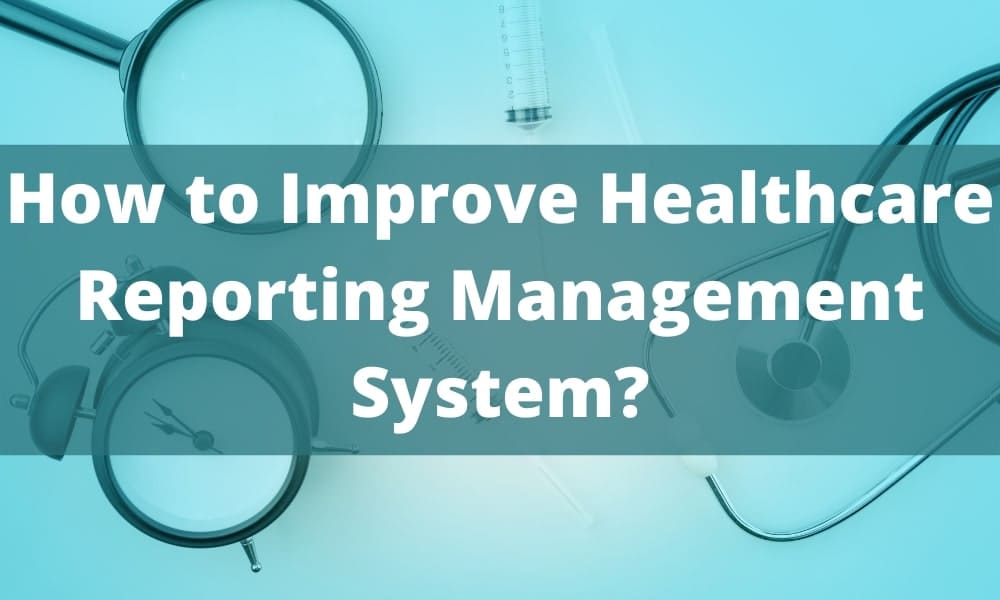How to Improve Healthcare Reporting Management System?
An ever-increasing number of Americans are covered by health insurance, highlighting the need for quality improvement in US healthcare. Many efforts are underway to enhance patient outcomes and safety and care coordination, efficiency, and cost-cutting in today’s healthcare environment. Here are some ideas to help you strengthen healthcare.
1. Analyze your results and data to see any patterns
“If you can’t measure it, you can’t manage it,” Peter Drucker famously stated. Before you can begin to enhance healthcare, you must first identify areas for improvement and establish baseline outcomes.
Consider trends and statistics gleaned from electronic health records, outcomes studies, and other data sources to pinpoint specific areas that require attention.
Preventive healthcare spending went from 15.8 euros per capita in 2010 to 24.9 euros per capita in 2018. Between 2010 and 2018, Italy’s public healthcare spending on prevention climbed dramatically per person.
2. Identify and work on your objectives
Set concrete and measurable goals in the areas you most need development. These should be exact and quantitative. Using the IOM’s six improvement goals or pillars of excellent healthcare, you can define your improvement targets. According to the Institute for Healthcare Improvement (IHI).
- Prevent patients from being injured due to the care they are receiving.
- Practical: Match care to science; minimize overuse of ineffective care and underuse of effective care.
- Honor and respect the individual’s right to make their own decisions.
- Reduce the number of times patients and caregivers have to wait.
- Reduce the amount of garbage.
- Health disparities between racial and ethnic groups should be eliminated.
3. Create a well-balanced team.
Members of a good team should come from various backgrounds and have varying expertise and experience. The IHI says that one of the first steps in improvement is to put together a well-balanced team. The team should contain a senior leader who can advise, offer oversight, and advocate for the group; a clinical expert who has the experience necessary to make informed clinical judgments; and a project manager who can execute day-to-day duties and keep the team on track.
4. Add Human Factors Inputs to the equation
The Human Factors and Ergonomics Society describes this body of knowledge collects information about human capabilities and constraints. To create tools, machines, systems, jobs, and settings that are all designed with the user in mind, the field of human factors engineering employs a variety of methods and tools that consider human aspects of information. These have a direct bearing on raising the level of quality.
Some of the most important human factors principles are avoiding reliance on memory, standardizing procedures, and adopting protocols and checklists. Consideration of human factors in the design of healthcare systems and processes has many benefits, including more efficient care processes, enhanced communication between medical providers, a better understanding of a patient’s medical condition, reduced risk of medical device and health IT-related errors, improved patient outcomes, and cost-savings, according to The National Center for Human Factors in Healthcare.
5. Develop a workable strategy
It would help if you devised a workable improvement strategy to meet your objectives on time and within budget. Specific measurements, techniques for obtaining those measurements, and improvement criteria derived from your goal setting and data analysis efforts are all included in this package. Make sure your data and measurements are tracked in an organized manner. There are detailed guidelines for establishing and implementing a healthcare quality improvement plan on the Health Resources and Services Administration website. To learn more about project management for healthcare workers, check out our guide.
6. The PDSA cycle should be well-known by this point
The IHI recommends the Model for Improvement as a framework for improvement efforts. The Associates in Process Progress concept, according to IHI, is “a simple yet powerful instrument for accelerating improvement.” The Plan-Do-Study-Act (PDSA) cycle is at the heart of the paradigm used in clinical settings to evaluate quality- or improvement-related changes. It is possible to determine whether changes are effective by first planning and then implementing them, assessing the effects, and finally acting on what has been learned. The steps of the scientific process are substantially replicated in this cycle, tailored for hands-on learning.
7. Make goals and progress known to others
Once your strategy is in motion, make sure you communicate it to the rest of your team and the company. Share both successes and failures. Be sure to express your gratitude to people who have helped you succeed. Your strategy has a better chance of success if your personnel are on board.
8. Investigate and collaborate with other groups
Patients and healthcare staff can access hospital statistics and trends via websites like Patient Care Link. See which firms excel in a particular area where you want to improve. You can learn from their quality improvement programs if you do some research online and in the books. To benefit patients, most organizations are willing to share this data. You can search the list of top healthcare app companies in the USA and choose accordingly.
A total of 1.22 million people visited Malaysia in 2019 for medical treatment. It is estimated that the number of persons traveling to Malaysia for medical treatment has more than doubled since 2011.
Conclusion
Many expensive and time-consuming activities can strengthen health information systems that can significantly influence data management and quality, including expenditures on electronic medical record systems and tertiary training programs.
Decentralizing health worker training and mentoring on the quality of data at the facility and district level and developing a comprehensive, single source of information to guide data management can be taken to ensure adequate human resources for data-related tasks.
Health information systems can be strengthened by adapting successful tactics from one health program to other initiatives. Flutter Agency assists offers the best Flutter resources and development expertise for the best-in-class healthcare mobile app development.

They offer end-to-end healthcare application development services. Apps for healthcare software can be developed utilizing iOS, Android, and cross-platform technology. Learn more about healthcare related news and information at flutteragency.com
Contemporary ventures
Recent blog
ready to get started?
Fill out the form below and we will be in touch soon!
"*" indicates required fields










